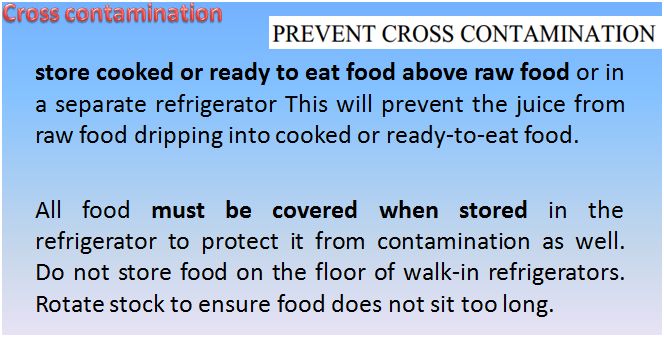THE IMPORTANCE OF HAND WASHING
Tuesday, 10 April 2012
Thursday, 5 April 2012
Chapter 3 : Factors affect Food borne Illness (temperature abuse)
What
is Temperature abuse?
Time temperature
abuse occurs when food is not stored or held at required temperatures, not
cooked or reheated properly at high enough temperatures to kill microorganisms,
or foods not cooled properly, and any time a food is allowed to remain in a
temperature that is favorable to the growth of microorganisms.
Some food requires
time and temperature control to make it safe.
It is called TCS ;
time and temperature control for safety.
Disease causing
pathogens can grow well in TCS food when it is kept at temperature range know
as temperature danger zone.
Chapter 3 : Factors that affect food borne illness
Introduction
Although the number
of people suffering from food poisoning fluctuates from year to year, it's fair
to say that recent times have seen a general increase in the level of foodborne illness. Although
the 'official' figures (i.e. those formally notified/confirmed) have been
falling recently, it is thought that these form only a small proportion of the
total number of people who actually suffer from foodborne illness every year.
There are many suggested reasons for this:
There are more people eating meals out!
Tuesday, 3 April 2012
Chapter 2 : What is Food borne Illness?
How bacteria get in food
1.Bacteria may be present on products when you purchase
them. Raw meat, poultry, seafood, and eggs are not sterile. Neither is produce
such as lettuce, tomatoes, sprouts, and melons.
2.Foods, including safely cooked, ready-to-eat foods, can
become cross-contaminated with bacteria introduced on raw products, meat
juices, or other contaminated products, or by poor personal hygiene.
The
“danger zone”
Bacteria multiply
rapidly between 40° and 140° F. To keep food out of this “danger zone,” keep
cold food cold and hot food hot.
Store food in the
refrigerator (40° F or below) or freezer (0° F or below).
Cook food to 160° F
(145° F for roasts, steaks, and chops of beef, veal, and lamb).
Maintain hot cooked
food at 140° F.
Reheat cooked food to
165° F.
Which
Bacteria are Responsible for Food-borne Illness?
Some bacteria cause
more serious illness than others, but only a few are responsible for the
majority of cases. Below is information regarding nine prominent bacteria.
Subscribe to:
Posts (Atom)

















































